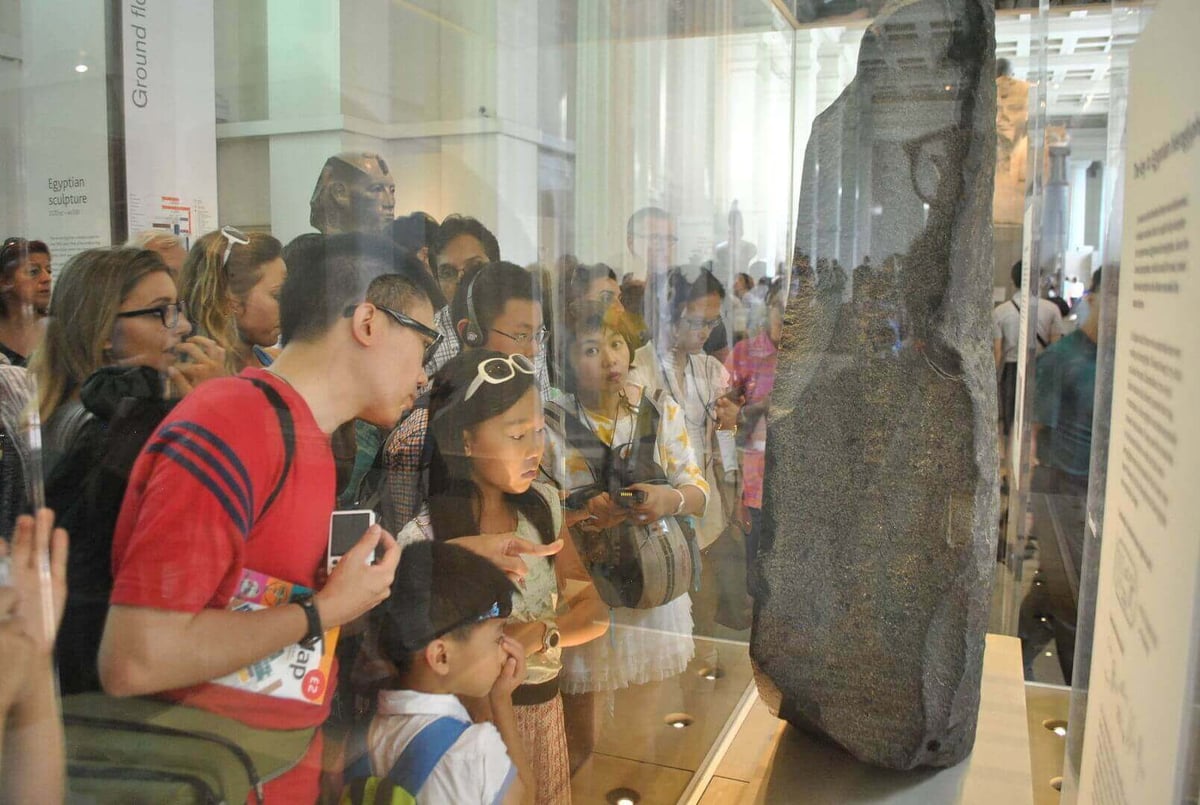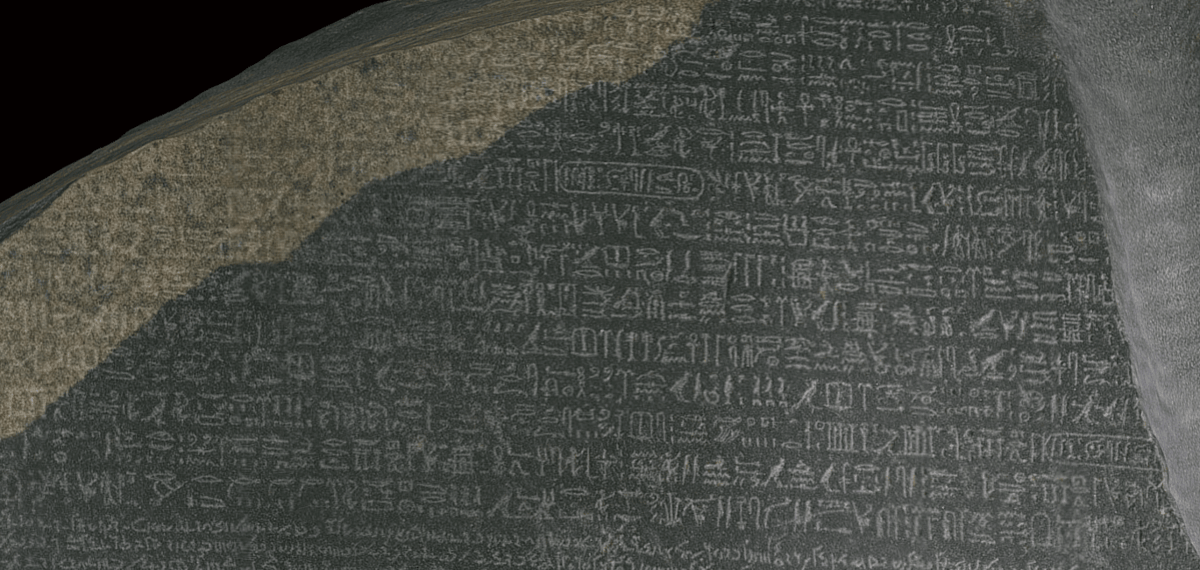View the Rosetta Stone in 3D from the comfort of your home, with a 3D scan based on 228 photographs taken by the British Museum in London.
Digital technicians at the British Museum in London have uploaded the very first 3D model of the legendary Rosetta Stone. As a major attraction at the museum, the stone resides in a glass case that allows a 360 degree view. But large crowds can make getting close difficult.
Now hosted on Sketchfab, the new model allows you to examine the gray stela from every angle. You can also zoom in up close to study its inscribed characters and varying textures. Alternatively, you can download the OBJ file and attempt to 3D print it.
Wait. What? You’ve never heard of the Rosetta Stone before? Lucky for you, the museum has published a very useful primer right here. Go ahead and read it. We can wait.
According to Daniel Pett, the museum’s senior digital humanities manager:
“This scan was part of our larger attempt to capture as many of our iconic pieces from the collection — and indeed the unseen in store objects — and make them available for people to view in 3D or in more tactile forms.”
The scan was published to commemorate the 218th anniversary of the stone’s discovery in 1799 by Napoleon’s troops in Egypt. The museum also took advantage of Sketchfab’s new integrated audio feature to add a brief description of the stone’s history. It automatically plays when you load the model.

Rosetta Stone Resides in Virtual Museum on Sketchfab
Dating to 196 BCE, the stone was the key that enabled scholars to decipher — and consequently read — hieroglyphs. This is because the ancient Egyptian script appears alongside identical texts in Demotic and ancient Greek. These were two languages they could already understand.
The text is a decree passed by a council of priests on the first anniversary of King Ptolemy V’s coronation. The 14 lines of hieroglyphs appear at the fractured top of the stone, which is a broken portion of a larger slab. Below it are 32 lines in Demotic and 53 in ancient Greek that collectively cover the entire face of the stela.
The 3D scan is a composite of 228 photographs taken with Nikon D5100, Sony A6000, and OnePlus3 smartphone. But according to Pett, the museum had some difficulty putting it together.
“The glyphs are really shallow, many of the images are shot on macro level and we only had an hour to work on the capture. The back of the model is shot through the glass case, so it came out better than I thought it would.”
The 3D model joins over 200 objects from the museum’s collection that it has uploaded so far on Sketchfab, from the 9,500-year-old Jericho Skull to a sculpture of the Pacific god A’a. And if you have access to a headset such as Google Cardboard, all of them are available to view in virtual reality too.
Source: Digital Trends

License: The text of "British Museum Shares 3D Scan of the Rosetta Stone" by All3DP is licensed under a Creative Commons Attribution 4.0 International License.